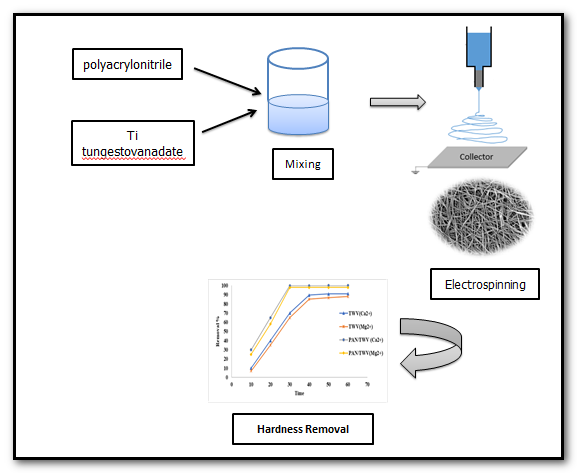
The challenge posed by the presence of calcium ions (Ca2+) in process streams is attributed to its adverse effects on the heat transfer efficiency of process equipment. In this study, a novel electrospun nanofibrous composite was synthesized by combining polyacrylonitrile (PAN) with well-dispersed Titanium tungestovanadate (TWV) cation exchanger. Homogeneous precipitation technique was employed to synthesize nano-titanium (IV) tungstovanadate (TWV) cation exchanger. Various synthesis parameters, including reactant volume ratio, amount of precipitating agent and reaction temperature, were optimized to achieve the highest ion exchange capacity (IEC). The prepared ion exchange material exhibited an ion exchange capacity (IEC) of 2.39 meq.g-1 for Na+ ions. The incorporation of the prepared nanoparticles into nanofibers conferred the sorption capabilities of the composite. The nanofibers' morphologies and structures were analyzed using Fourier transform infrared (FTIR), scanning electron microscopy (SEM), and X-ray diffraction (XRD). Batch sorption experiments were carried out to investigate the sorption properties. Controlled experiments were conducted to investigate the impact of various factors, including solution pH, temperature, dosage, contact time, and the initial concentration of the hard water. The results indicated that the optimum adsorption conditions that gave the highest percentage of removal 99%, 98% for Ca2+ and Mg2+ ions respectively were 50 mg of adsorbent dosage, 500 ppm of Ca2+ and
Mg2+ solution =7, and a contact time of 30 min at room temperature. The kinetic data were fitted to pseudo second order model. Furthermore, the thermodynamic study suggested that the adsorption on PAN/TWV NF was endothermic and spontaneous.
Total file downloads: 19